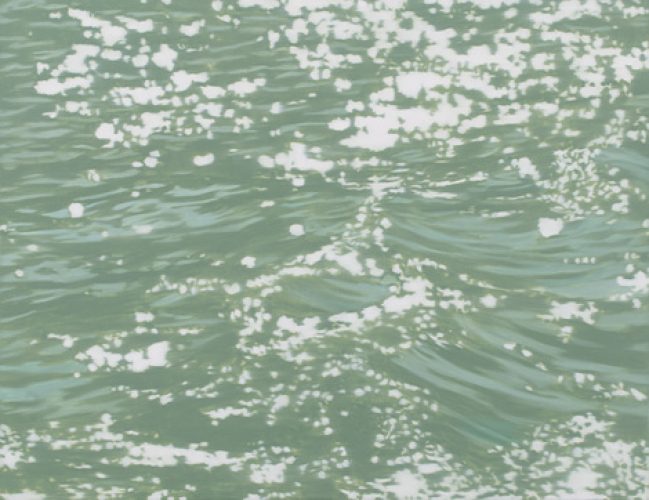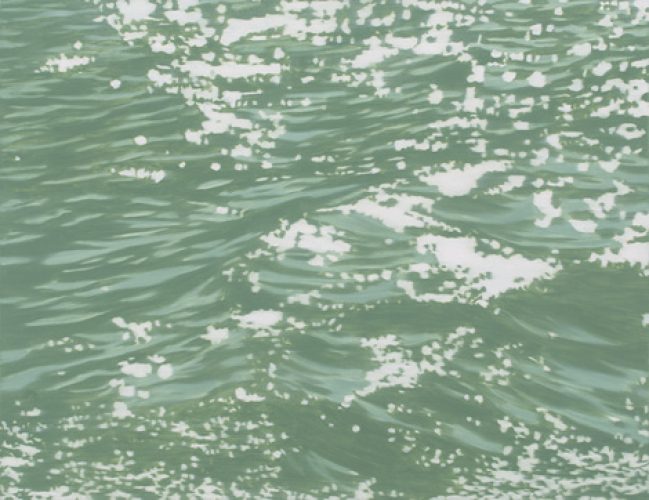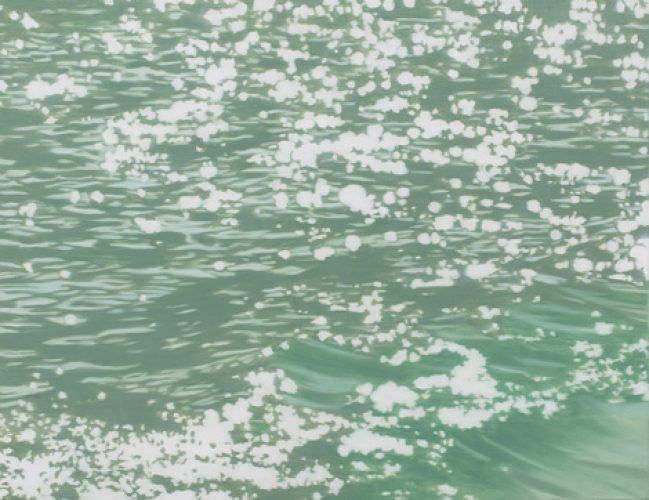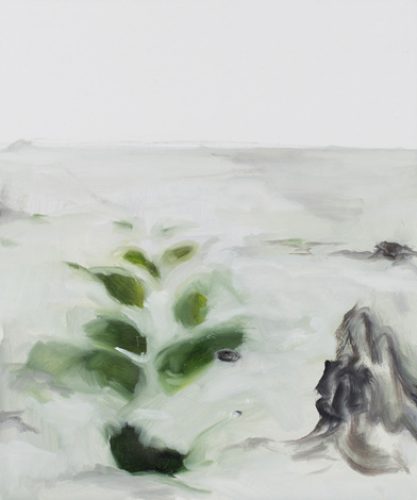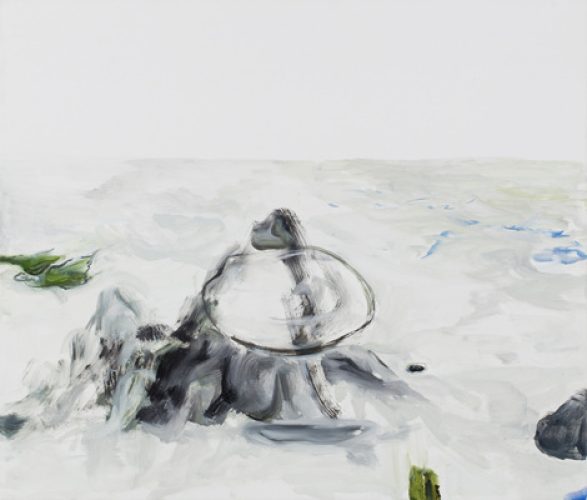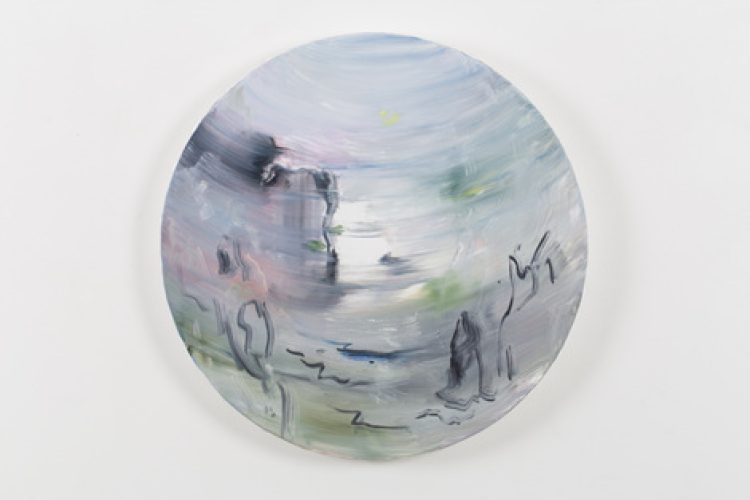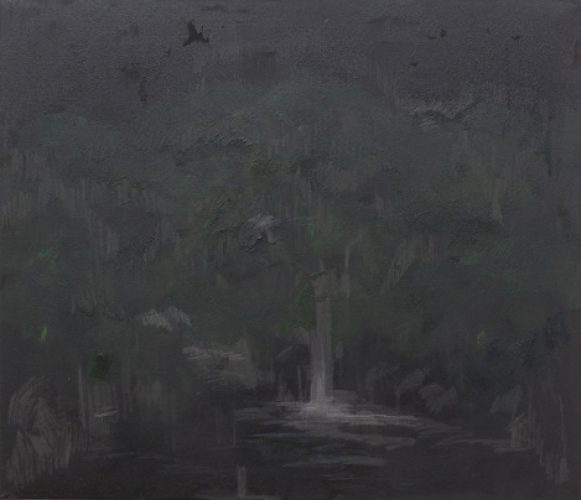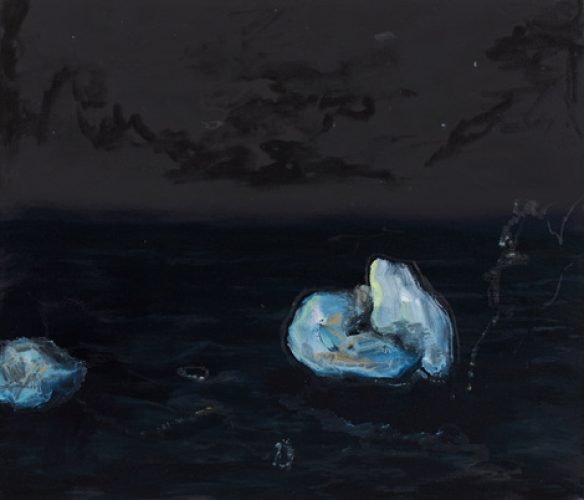Using paint as a medium, the artist launches into incessant conversation with the canvas. Surely the art of drawing has derived from mankind’s most basal desires of wanting to possess something. It is a fact that has already stood the test of time, so ingrained in our subconscious that it need not be debated over.
And now two artists recognize the act of painting as a performance: Youngzoo Im and Unui Jang. Youngzoo Im portrays religious and popular belief in her works through the combination of video art, installations, and painting. Unui Jang, who has been fascinated with non-material components, begins a long journey of drawing by breathing through the canvas. Interestingly, the two artists have neither common theme nor subject between their corporately created art works. While Youngzoo Im says she feels pleasure when there are many drawings to complete because she can have more times to paint. Unui Jang reveals that she paints because it is the only thing that she can do now. Though they paint for different reasons, their determination to continue painting is ingrained in each and every one of their strong and steadfast strokes.
In that Youngzoo Im repeats the process of drawing and erasing multiple times in her works, her method of painting is an ineffective one, not unlike using a hair pencil to weave a piece of art in the old-fashioned way. Youngzoo Im usually expresses her imagination or short moments of her daily life. On the canvas lies a stubby little image that looks as if it was there from the very beginning. In the Illuminated painting, brushstrokes that seem to narrowly pass through space emerge upon the canvas, and the boundary of vague figures are solidified. She leads us to an alien place in which we have never been before. No sooner than they surface as a single existence through the paints, the images fade away in the palms of the artist.
“Once in a dream, I thought myself to be a rock. Then I realized I was no more than a shadow, and I became miserable. I was once again cheerful, however, upon noticing that the object I used to think as the sun was actually a shadow.” Youngzoo Im
Her rich imaginations come out as pieces of art through the use of color prints and deft strokes of the brush. The fleeting images that we so carelessly miss (even at this very moment) are well expressed in her paintings, such as a street scene that was seen by chance or an image from a forgotten dream. All these scattered images begin to arise when the artist begins to draw. The artist incorporates folktale-like imagery derived from pieces of oral literature, and thus the body of the artist herself is transformed into a place where all the stories and images may dwell.
Unui Jang, who resumes drawing since she cannot bring herself to quit it, confesses that she has been “practicing,” not “drawing” in recent years. In spite of her confessions, it is impossible to notice when you see her works, for you may see flowing pieces of art, but not a glimpse of poor drawings. The everyday pictures taken by smart phones are laid upon the canvas alongside the shimmering “lights.” The images that can only be possessed through the utilization of electronic machinery (like photos or videos) are recreated by artist’s hands. Her drawings are like snapshots. The white paint on the canvas becomes a wave scattered by sunlight. It is the moment in which the green paint becomes a picturesque landscape. It becomes a green river that flows from the very corners of the canvas, embedding in its waters (usually flowing but paused just for the moment) the evanescent beauty of time.
What is the foundation of her purpose to restart drawing? She reveals that she didn’t choose to do so, yet she just had to. What a strange coincidence it is, that while the act of painting is something beautiful, it is at the same time a possessive desire to keep a beautiful object nearby; to forever gaze upon it and contemplate its beauty. The painting thus becomes a trace, a remnant of a commixture of the artist’s imagination, the image of her possessive object, and the energy that flows within the body of the painter holding the brush. It becomes so the moment the artist and the empty screen of the canvas come into contact, overlapping and blooming into color.
/Curated by Sora Lee


